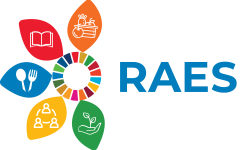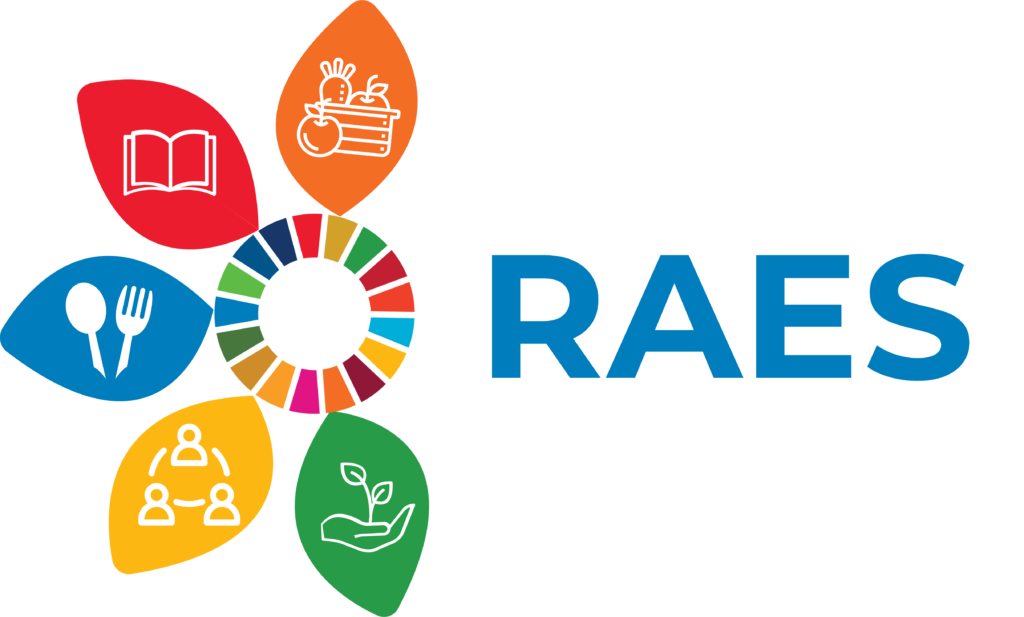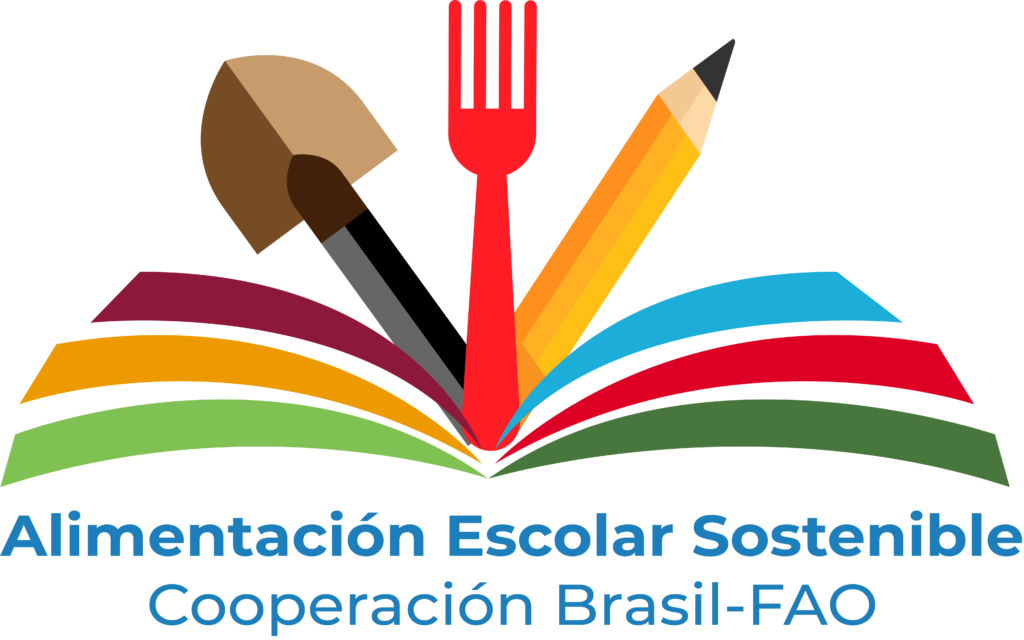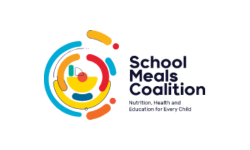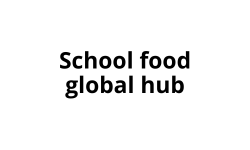Najla Veloso, coordinator of the project Regional Agenda for Sustainable School Feeding in Latin America and the Caribbean, in the framework of the Brazil-FAO Cooperation Programme.
Discussing food loss and waste (FLW) becomes more urgent when we face the data from the United Nations Environment Programme (UNEP) stating that 1 billion tons of food were discarded in 2022. It’s as if ⅕ of everything produced was deliberately thrown away. This topic gains even more relevance when statistics indicate that hunger affects 41 million people in Latin America and the Caribbean and 733 million worldwide, according to the most recent data from the report “The State of Food Security and Nutrition in the World,” published by the Food and Agriculture Organization (FAO) and other UN agencies.
But this will not be an article about problems, rather about solutions and possible paths, especially regarding the role of school feeding programmes. Before entering into this discussion, it is essential to differentiate the concepts of loss and waste, which are sometimes used as synonyms. According to the FAO, loss occurs during the production phase, harvesting, post-harvest, and processing within the food chain. Waste, on the other hand, occurs at the consumption level, typically in retail and households.
In this article, we will address waste in the school environment, covering everything from the planning of food purchases to the preparation and consumption of meals by students, and finally, the disposal of leftovers and organic and inorganic waste generated during school feeding. Although discussions about food waste in the school environment generally begin at the point of delivery of these products to schools, earlier stages impact the quantity of food discarded by schools.
In this regard, some preliminary criteria before the food reaches the school should be highlighted to reduce food waste, including:

i) Adequate planning for purchases;
ii) Communication among all involved actors, especially between managers, nutritionists, and family farmers;
iii) Respect for the seasonality of locally produced foods and regional food culture;
iv) Training for family farmers to meet the demands of school feeding programmes;
v) Preference for short circuits that reduce the chances of losses, favoring logistics to ensure that foods arrive in suitable conditions at schools.
After the arrival of the food at schools, actions aimed at mitigating waste are also necessary, such as:
i) Proper storage;
ii) Defining nutritious menus that respect seasonality and local biodiversity;
iii) Training for cooks to ensure better food preparation and that appropriate quantities are served to students;
iv) Training for the reuse of clean leftovers in the preparation of other dishes, utilizing stems, peels, and seeds, for example;
v) Implementing food and nutritional education actions that can stimulate the consumption of nutritious foods and increase students’ acceptance of the offered food, which has the potential to foster healthy habits for life and positively impact the health of students and their families.
Environmental, economic, and social impact
When these actions are not well planned and interconnected, we observe a significant amount of food wasted. It is important to point out that we are not only talking about the disposal of food but also the environmental, financial, and social resources expended. According to UNEP, around 8 to 10% of global greenhouse gas emissions result from food loss and waste. In financial terms, the estimated value is 1 trillion dollars.
From an environmental perspective, waste impacts the increase in solid waste such as plastic packaging, aluminum, glass, and metals. Organic waste, in turn, is divided into two types: clean leftovers and scraps. Clean leftovers can be reused in the production of new recipes—creative, tasty, and appealing to students’ palates. In the case of scraps — waste considered unfit for human consumption — they can be directed for composting and biofertilizer production.
Possible solutions
To minimize the volume of waste generated in the process of delivery, handling and during meals at school, practices such as replacing plastic packaging with biodegradable materials or recycling inorganic materials can be adopted, encouraging separation and selective collection within schools.
As a viable alternative aimed at mitigating food waste in the school environment, it is necessary to highlight the importance of implementing awareness actions, which can include educational campaigns with the incorporation of FNE and environmental education in the school curriculum. Adjustments to menus that consider student acceptability also allow for better food utilization.
Additionally, the implementation of educational school gardens can promote acceptance of healthy and fresh foods, produced and cultivated by the students themselves, thus fostering healthier and more conscious consumption habits. Another possible action is the utilization of organic waste that returns to the garden as compost, producing a sustainable cycle.
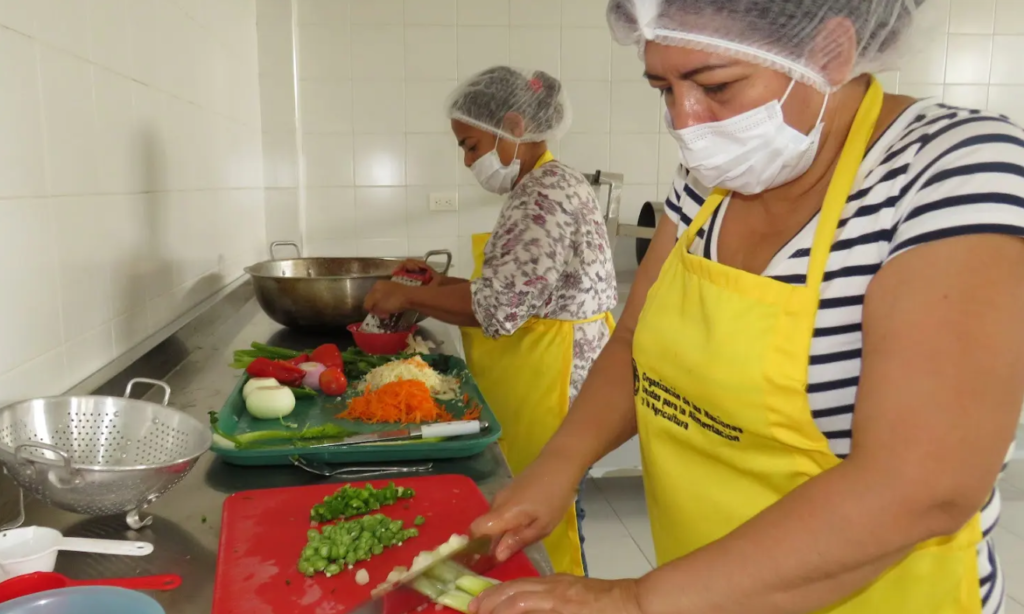
In this sense, there are promising and inspiring experiences in Brazil and Latin America, from projects that adjust food quantities based on consumption and measure what has been wasted, to FNE actions that raise awareness about the importance of not throwing away quality food in a world with millions facing food insecurity. Moreover, the environmental aspect has also gained prominence, emphasizing the connection between our food choices and climate change. However, it is very important that these actions do not depend solely on the goodwill of committed managers or teachers, but that they be institutionalized in schools and integrated into the curriculum.
Legislative advances on the topic
Furthermore, it is important to highlight the existence of normative frameworks that guide managers, teachers, and civil society on how to act to reduce waste. In the Brazilian case, Law No. 11,947/2009, which regulates the National School Feeding Programme (PNAE), mandates a minimum of 30% of purchases from family agriculture, stimulating short circuits of production and consumption, facilitating logistics and promoting the consumption of regionally produced goods. This law also provides for the inclusion of FNE actions in the teaching and learning process as one of the guidelines for school feeding, addressing the topics of food, nutrition, and the development of healthy life practices, within the framework of food and nutritional security.
Additionally, it is worth mentioning Interministerial Ordinance No. 1,010/2006, from the Ministry of Health and the Ministry of Education, which establishes guidelines for school feeding and highlights the need for measures that prevent waste, such as adjusting the amount of food prepared to meet the needs of students. There are also state and municipal regulations addressing the issue of waste in the realm of school feeding.
In the context of Latin America and the Caribbean, legislative advances aimed at reducing food loss and waste can be observed, from regulations on food donations, awareness about food waste, and the inclusion of the topic in school curricula. Examples include Argentina, Colombia , El Salvador , Mexico, Panama, and Peru.
A network to share solutions
Another initiative by the Brazilian Government, with support from the FAO, is the Sustainable School Feeding Network (RAES), created in 2018. Since then, this network has shared good practices and trained professionals from school feeding programmes in around 26 countries. In recent years, the RAES Network has supported dialogues and exchanges to present and discuss solutions and challenges for reducing food loss and waste, especially within school feeding programmes and in the school environment.
Finally, it is important to note that the fight against waste in the school environment requires a joint effort among governments at various levels, decision-makers, legislators, civil society, school managers, educators, and nutritionists, in addition to the collaboration of the students themselves and their families.
